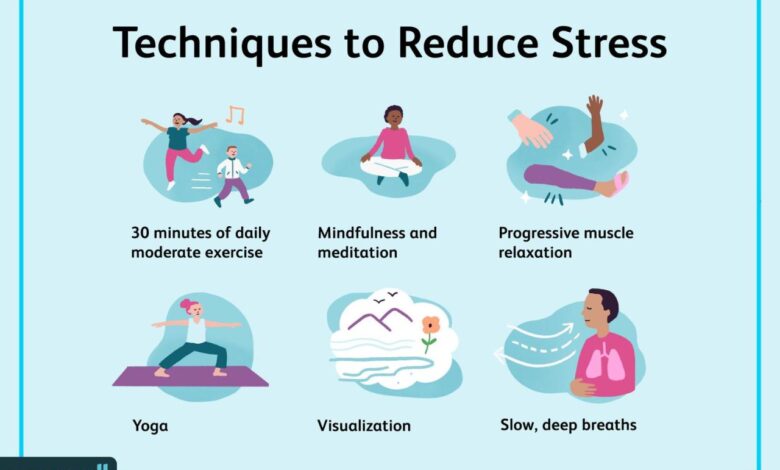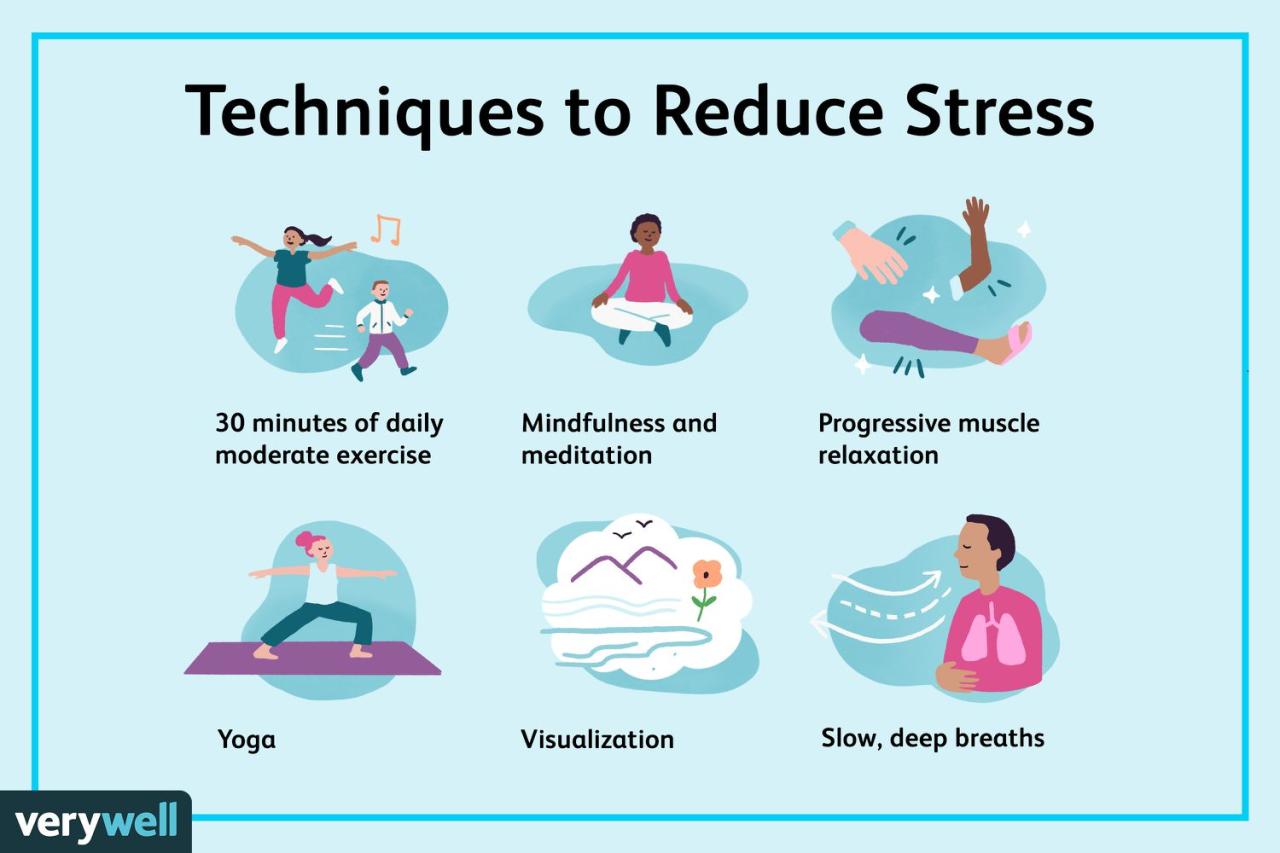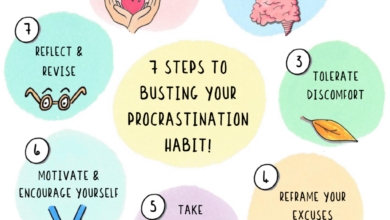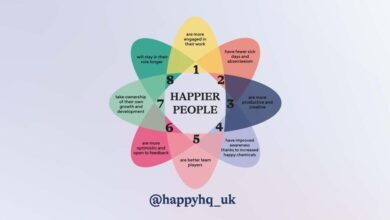
5 Easy Strategies for Reducing Daily Stress
5 Easy Strategies for Reducing Daily Stress: We all experience stress in our daily lives. It can come from work, relationships, finances, or even just the daily grind. While stress is a normal part of life, chronic stress can have a negative impact on our physical and mental health.
That’s why it’s important to find healthy ways to manage stress and reduce its impact on our well-being.
This article will explore five easy strategies that you can incorporate into your daily routine to reduce stress and improve your overall quality of life. From the calming power of mindfulness to the invigorating benefits of exercise, these strategies offer practical and effective ways to manage stress and live a more balanced life.
Mindfulness and Meditation

Mindfulness and meditation are powerful tools for stress reduction, offering a path to a calmer, more balanced life. They help us become more aware of our thoughts, feelings, and bodily sensations, allowing us to observe them without judgment. This increased self-awareness empowers us to manage stress effectively and cultivate inner peace.
Finding ways to reduce daily stress is crucial for overall well-being, and incorporating simple strategies can make a world of difference. One of the most accessible and effective methods is regular physical activity, and you don’t need to be a gym enthusiast to reap the benefits.
In fact, walking can help you live longer even if you’ve never exercised before. This gentle form of exercise not only reduces stress but also improves mood, sleep quality, and overall health. So, lace up your shoes, take a walk, and experience the positive impact on your stress levels and overall well-being.
Benefits of Mindfulness and Meditation
Mindfulness and meditation offer a wide range of benefits for both mental and physical well-being. They have been shown to reduce stress, anxiety, and depression, improve focus and concentration, enhance emotional regulation, and promote compassion and empathy. Studies have also linked these practices to improved sleep quality, reduced blood pressure, and a strengthened immune system.
Simple Mindfulness Techniques for Daily Life
Incorporating mindfulness into your daily routine can be as simple as bringing your attention to the present moment. Here are some easy techniques:
- Mindful Breathing:Take a few deep breaths, focusing on the sensation of each inhale and exhale. Notice the rise and fall of your chest or abdomen.
- Body Scan:Sit or lie down comfortably and bring your attention to different parts of your body, starting from your toes and moving up to your head. Notice any sensations, such as warmth, tingling, or pressure.
- Mindful Walking:Pay attention to the sensation of your feet on the ground, the movement of your legs, and the surrounding environment. Notice the sounds, sights, and smells around you.
- Mindful Eating:Engage all your senses while eating. Notice the colors, textures, smells, and tastes of your food. Chew slowly and savor each bite.
Creating a Calming Atmosphere for Meditation
Finding a quiet space where you can relax and focus is essential for meditation. Here are some tips for creating a calming atmosphere:
- Choose a Comfortable Spot:Find a quiet place where you won’t be disturbed. It could be your bedroom, a meditation room, or even a park bench.
- Dim the Lights:Soft lighting can help create a peaceful ambiance. Use dimmable lamps or candles to reduce bright light.
- Use Soothing Sounds:Gentle music, nature sounds, or white noise can help block out distractions and create a calming atmosphere.
- Add Aromatherapy:Certain scents, such as lavender or chamomile, can have calming effects. Use essential oils or scented candles.
Guided Meditation for Beginners
Here is a short guided meditation script for beginners:
Find a comfortable position, either sitting or lying down. Close your eyes if you feel comfortable doing so. Bring your attention to your breath. Notice the rise and fall of your chest or abdomen as you inhale and exhale. Let your breath be your anchor, bringing you back to the present moment. As you breathe in, imagine you are inhaling peace and tranquility. As you breathe out, imagine you are releasing any tension or stress. Continue to focus on your breath, allowing your mind to settle and become calm. Notice any thoughts or feelings that arise, but don’t judge them. Simply acknowledge them and gently return your attention to your breath. You can continue this practice for as long as you like.
Time Management and Prioritization: 5 Easy Strategies For Reducing Daily Stress
Time management is a crucial aspect of stress reduction. When you effectively manage your time, you gain control over your schedule and reduce the pressure of deadlines and commitments. This empowers you to approach tasks with a sense of calm and focus, minimizing feelings of overwhelm and anxiety.
Prioritizing Tasks and Avoiding Procrastination
Effective prioritization is essential for efficient time management. By identifying the most important tasks and focusing on them first, you can avoid feeling overwhelmed by a long to-do list. Procrastination, often fueled by fear or lack of motivation, can lead to increased stress as deadlines approach.
Finding ways to manage daily stress is crucial for overall well-being. One strategy I’ve found helpful is to prioritize physical activity, which can act as a natural stress reliever. If you’re an endurance athlete, you know the importance of fueling your body properly, and that includes carb-loading during workouts.
Check out this article on how endurance athletes should carb up during workouts for some valuable tips. Along with exercise, other stress-reducing strategies include mindfulness, spending time in nature, and connecting with loved ones.
Here are some techniques to prioritize tasks and overcome procrastination:
- The Eisenhower Matrix:This popular time management tool categorizes tasks based on their urgency and importance. Urgent and important tasks are tackled immediately, while less urgent but important tasks are scheduled for later. Less important tasks are delegated or eliminated, while urgent but unimportant tasks are often re-evaluated or handled quickly.
- The Pareto Principle (80/20 Rule):This principle suggests that 80% of your results come from 20% of your efforts. Identifying and focusing on those high-impact tasks can significantly improve productivity and reduce stress.
- Time Blocking:Allocate specific time slots for different tasks or activities. This can help you stay on track and avoid getting sidetracked by less important activities.
- Pomodoro Technique:This technique involves working in focused bursts of 25 minutes followed by a short break. It promotes productivity and helps to maintain focus throughout the day.
Using Time Management Tools and Apps
Numerous time management tools and apps are available to help you stay organized and on track. These tools can assist with task management, scheduling, reminders, and tracking your progress.
One of my favorite stress-reducing strategies is taking a break from sugary treats. Instead of reaching for a candy bar, I try to make healthier choices, like swapping out sugary drinks for water or exploring some of the delicious and simple sugar swaps found on this helpful website.
It’s amazing how much a small change in my diet can make a big difference in my overall well-being and help me manage stress more effectively.
- Todoist:A popular task management app that allows you to create projects, assign deadlines, and set reminders. It also integrates with other apps like Google Calendar and Slack.
- Asana:A project management tool that helps teams collaborate on tasks and projects. It provides features for task assignment, communication, and progress tracking.
- Google Calendar:A free and widely used calendar app that allows you to schedule appointments, set reminders, and manage your schedule effectively.
- Evernote:A note-taking app that can be used to capture ideas, organize information, and manage tasks. It also offers features for collaboration and file sharing.
Setting Realistic Goals and Breaking Down Projects
Setting realistic goals is crucial for avoiding overwhelm and maintaining motivation. Instead of aiming for ambitious goals that may seem unattainable, focus on smaller, achievable steps. Break down large projects into manageable tasks to make them less daunting and more achievable.
- SMART Goals:This acronym stands for Specific, Measurable, Achievable, Relevant, and Time-bound. By setting goals that meet these criteria, you increase the likelihood of success and reduce stress.
- Task Breakdown:Divide large projects into smaller, more manageable tasks. This can make the project seem less overwhelming and provide a sense of progress as you complete each task.
- Prioritize Tasks Within Projects:Even within a large project, prioritize tasks based on their importance and urgency. This ensures that the most critical tasks are addressed first.
Social Support and Connection
Our social connections play a crucial role in our overall well-being, and this includes managing stress. When we feel supported and connected to others, we’re better equipped to cope with life’s challenges and maintain a positive outlook.
Benefits of Strong Relationships
Strong relationships with family and friends provide a sense of belonging, security, and love. This can act as a buffer against stress, helping us to feel less overwhelmed and more resilient in the face of adversity.
- Emotional Support:Sharing our feelings and concerns with loved ones can help us to process difficult emotions and gain a fresh perspective. This can be particularly helpful during times of stress.
- Practical Support:Friends and family can offer practical assistance, such as helping with childcare, errands, or financial support. This can alleviate stress by reducing our workload and providing a sense of security.
- Social Belonging:Feeling connected to others helps us to feel valued and appreciated. This can boost our self-esteem and provide a sense of purpose, which can be essential for managing stress.
- Improved Physical Health:Studies have shown that people with strong social connections tend to have better physical health outcomes. This is likely due to the positive impact of social support on our stress levels and overall well-being.
Building a Supportive Network
Building a strong social network takes time and effort, but it’s a worthwhile investment in our mental and emotional health. Here are some tips for cultivating supportive relationships:
- Nurture Existing Relationships:Make an effort to stay in touch with family and friends. This can involve regular phone calls, visits, or simply sending a text message to check in.
- Join Groups and Activities:Engaging in activities that align with your interests can help you to meet new people and build connections. This could involve joining a book club, taking a class, or volunteering in your community.
- Be a Good Listener:Showing genuine interest in others is a key ingredient in building strong relationships. Practice active listening skills and offer support when needed.
- Be Open and Honest:Sharing your thoughts and feelings with others can help to strengthen your connections. However, it’s important to be selective about who you confide in and to choose people who you trust and feel comfortable with.
Seeking Help When Needed
It’s important to remember that we don’t have to go through stressful times alone. If you’re struggling to cope, don’t hesitate to reach out for help. This could involve talking to a trusted friend or family member, seeking professional support from a therapist or counselor, or joining a support group.
Types of Social Support and Their Impact on Stress, 5 easy strategies for reducing daily stress
| Type of Support | Impact on Stress | Example |
|---|---|---|
| Emotional Support | Reduces feelings of loneliness, isolation, and anxiety. | A friend listening to you vent about a stressful work situation. |
| Practical Support | Reduces workload and provides a sense of security. | A family member helping you with childcare while you work on a deadline. |
| Informational Support | Provides guidance and resources to navigate stressful situations. | A colleague sharing tips on how to manage a difficult client. |
| Companionship Support | Reduces feelings of isolation and provides a sense of belonging. | Spending time with friends and family for social activities. |
Ultimate Conclusion
Incorporating these five easy strategies into your daily routine can significantly reduce stress and improve your overall well-being. Remember, managing stress is an ongoing journey, and finding what works best for you is key. Be patient with yourself, experiment with different techniques, and don’t hesitate to seek support from friends, family, or a professional if needed.
By taking proactive steps to manage stress, you can cultivate a more peaceful and fulfilling life.






